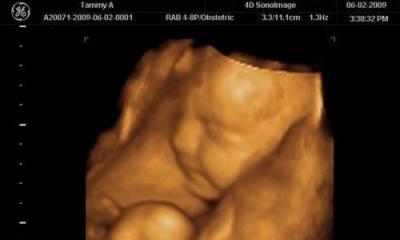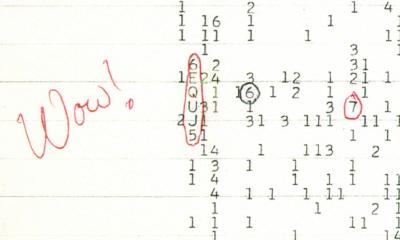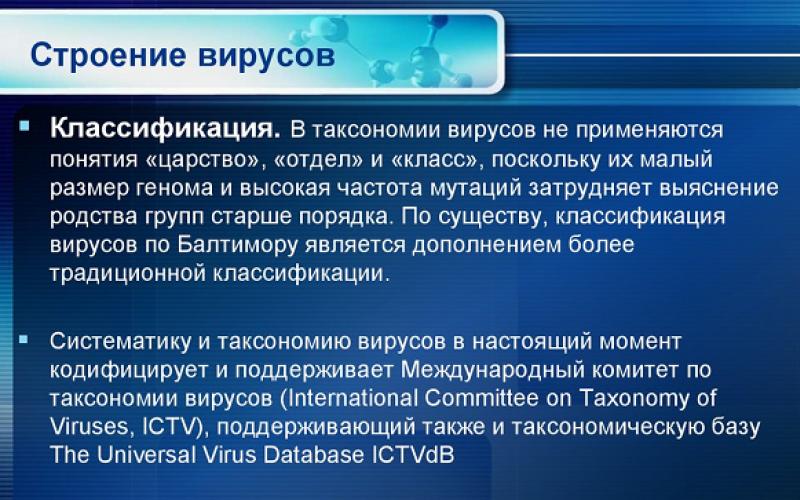The mystery of the radio signal "Wow Signal" solved June 10th, 2017
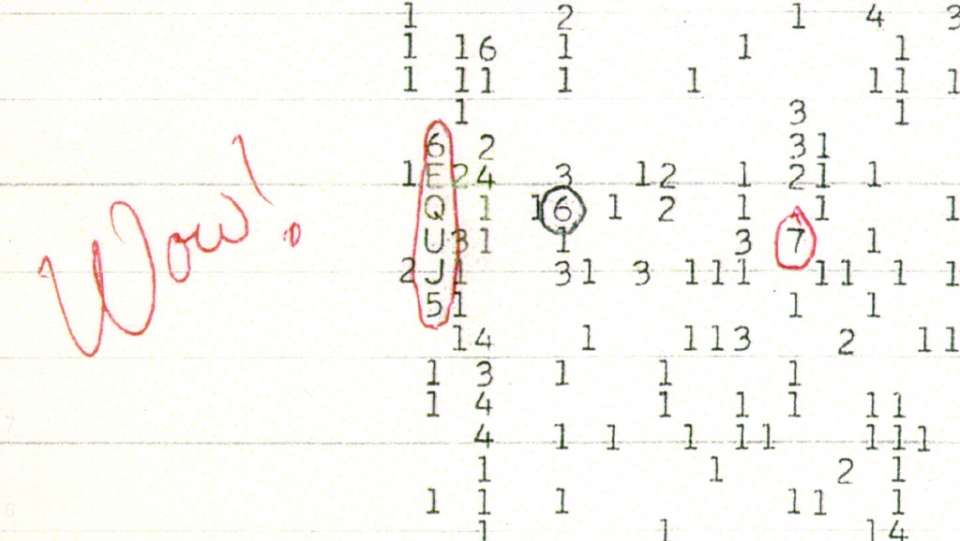
So, the background: On August 15, 1977 at 10:16 pm, the night before the death of the king of rock and roll Elvis Presley, one of the most mysterious events in the history of space exploration took place. Dr. Jerry Eyman, while working on the Big Ear radio telescope installed in Ohio, recorded a strong narrow-band space radio signal. It was a very powerful and stable signal lasting 72 seconds. Eiman circled the symbols corresponding to the signal on the printout and signed in the margins "Wow!" (translated from English. "Wow!"). This signature gave the signal its name.
The signal came from a region of the sky in the constellation Sagittarius, about 2.5 degrees south of the Hee star group. However, after years of waiting for something like this to happen again, nothing happened.
Scientists argue that if the signal was of extraterrestrial origin, then the beings who sent it must belong to a very, very advanced civilization. Sending such a powerful signal requires at least a 2.2 gigawatt transmitter, which is much more powerful than any on earth (for example, the HAARP system in Alaska, one of the most powerful in the world, is supposedly capable of transmitting a signal up to 3.6 megawatts).
As one of the hypotheses explaining the strength of the signal, it is assumed that the initially weak signal was significantly amplified due to the action of the gravitational lens; however, this still does not exclude the possibility of its artificial origin. Other researchers suggest the possibility of rotation of the radiation source like a beacon, a periodic change in the frequency of the signal or its single occurrence. There is also a version that the signal was sent from a moving alien starship.
In 2012, for the 35th anniversary of the signal, the Arecibo Observatory sent a response of 10,000 coded tweets towards the alleged source. However, whether anyone received them is unknown. Until now, the wow signal has remained one of the main mysteries for astrophysicists.
And only recently, after almost 40 years, researchers from the Center for Planetary Science finally unraveled the mystery of the origin of this radio signal. This is bad news for ufologists and other alien lovers - the source of this signal, with a fairly high percentage of probability, was one of the comets.
Before and after the "Wow Signal" incident, the "Big Ear" radio telescope spent a long time searching for radio transmission signals that could serve as evidence of the existence of highly developed extraterrestrial civilizations. Based on some of the available data and assumptions, astronomers have considered that the highest probability of detecting such signals lies in the 1420 MHz band, in the so-called "hydrogen band".
The "Wow Signal", which was recorded for 72 seconds, the maximum time during which the telescope could focus on a certain point in the sky, had all the parameters that met the search criteria. After registering this signal, scientists made repeated observations for a long time and often over the part of the sky from which the signal came. But all these observations have not yielded any results. An analysis of the data carried out in the subsequent time made it possible to exclude the possibility of interference in this not only by traces of the activity of terrestrial civilization, but also by the intervention of other celestial bodies, such as nearby stars, planets and asteroids. And the most suitable and attractive explanation for the origin of the signal "Wow Signal" for a long time remained the activity of an extraterrestrial civilization.
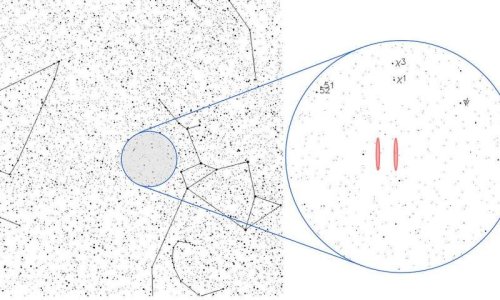
This state of affairs remained unchanged until last year, when a team of scientists from the Center for Planetary Science hypothesized that a comet could be the source of the Wow Signal. The frequency of this signal is determined by the high concentration of hydrogen in the comet "cloud", and the fact that the comet is moving explains the fact that the signal was no longer registered at the observed point in space.
In order to come to these conclusions, astronomers made a series of 200 observations between November 2016 and February 2017. These observations confirmed that the prime suspect, comet 266/P Christensen, was emitting signals at 1420 MHz. Some techniques used by astronomers made it possible to make sure that the comet was the source of the signals, and not something else.
Moreover, scientists have become convinced that comet 266/P Christensen is not some kind of anomaly. Three other comets that came under observation, P/2013 EW90 (Tenagra), P/2016 J1-A (PANSTARRS) and 237P/LINEAR, also emitted signals at a frequency of 1420 MHz. Now there is little doubt that the source of the "Wow Signal" is most likely Comet 266/P Christensen, or less likely some other comet. But in any case, a folder containing data on one of the biggest astronomical mysteries of our time can be safely hidden on a distant shelf.
sources



